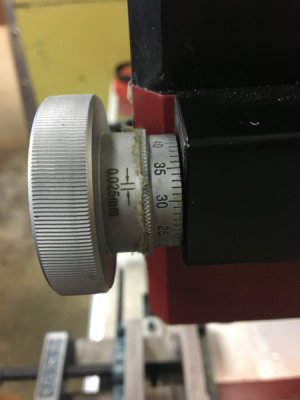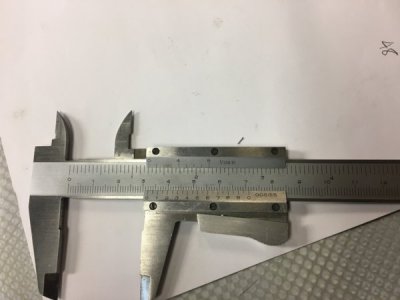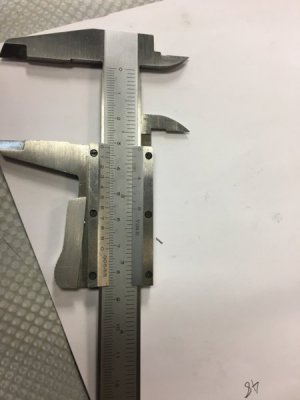- Joined
- May 14, 2013
- Messages
- 104
Will do my best to represent what happened, this was last night and I'm going off memory for the specific numbers, but the gist should make things apparent.
1. My mill's z-axis knob indicates each increment is 0.025mm. (LMS hi-torque equivalent)
2. My vernier caliper says each increment is 0.05mm. (it is, admittedly, a really cheap caliper)
- I measure 3.225 on the caliper.
- I need to take material off to hit 3.125.
- This is a difference of 0.100.
I get my z-axis 0, then turn the knob 4 increments (4 times 0.025 = 0.100).
When I re-measure the part, it measures 3.200. (i.e. it seems to take off 10% of what I expected it to)
What am I misunderstanding about the z-axis travel increments, and/or my caliper's increments?



1. My mill's z-axis knob indicates each increment is 0.025mm. (LMS hi-torque equivalent)
2. My vernier caliper says each increment is 0.05mm. (it is, admittedly, a really cheap caliper)
- I measure 3.225 on the caliper.
- I need to take material off to hit 3.125.
- This is a difference of 0.100.
I get my z-axis 0, then turn the knob 4 increments (4 times 0.025 = 0.100).
When I re-measure the part, it measures 3.200. (i.e. it seems to take off 10% of what I expected it to)
What am I misunderstanding about the z-axis travel increments, and/or my caliper's increments?




